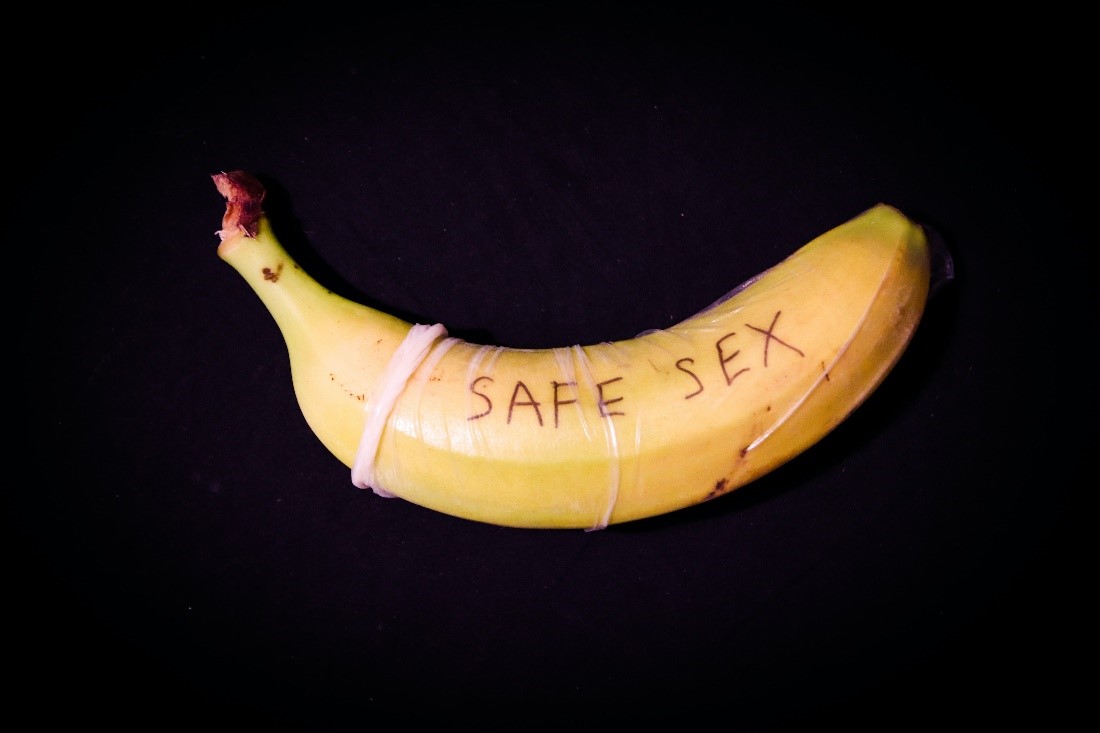Condoms are critical to preventing sexually transmitted infections and unwanted pregnancies in today's world where sexual health is paramount. Since time immemorial, these small but effective barriers have provided safe and reliable protection.
What is a condom?
A condom is a thin, elastic sheath that is placed over the penis during sexual intercourse and is usually made of latex, polyurethane, or lambskin. They form a physical barrier between the penis and vagina, limiting interaction with the body and reducing the risk of unwanted pregnancies and sexually transmitted diseases.
How does a condom work?
Condoms act as an effective barrier and reduce the likelihood of pregnancy by preventing sperm from entering the egg. They act as a barrier and provide a physical barrier that protects against sexually transmitted diseases such as HIV, gonorrhoea, chlamydia, syphilis, herpes, etc.
How effective are condoms in preventing pregnancy?
Condoms are extremely effective in preventing pregnancy when used consistently and properly. According to various studies, male condoms are 98% effective. Proper use is crucial, i.e., checking the condom for damage, using a new condom every time you have sexual intercourse, and placing the condom correctly.

Do condoms aid in prevention of stds?
Yes. both latex condoms for men or for women are very effective in preventing HIV and many other STDs when used properly each time. However, it is important to know that while condoms can greatly reduce the risk of transmission, they cannot completely eliminate it. Some diseases, including herpes and the human papillomavirus (HPV), can be transmitted through skin-to-skin contact in places where the condom is not covered.
Are there any risks to using condoms?
Condom use has no serious or adverse effects, but it can get teared or ruptured if used improperly. However, some people may experience allergic reactions to latex condoms, such as itching, redness, or rash. In such cases, non-latex condoms such as polyurethane or lambskin can be used. To ensure compatibility with condoms, consider silicone- or water-based lubricants and practise putting them on to get used to using them.
Who should be using condoms?
Condoms are appropriate for any sexual activity to prevent unwanted pregnancies and protect themselves and their partners from STDs. Consistent condom use, whether in a committed relationship or casual encounters, is a responsible choice that improves sexual health and well-being.
Where can i get condoms?
Condoms are widely available at pharmacies, supermarkets, convenience stores, and online retailers. They are often available without a prescription, so anyone who wants to protect themselves has easy access to them.
What is the price of condoms?
Condom prices vary by brand, type, and quantity. Condoms are more affordable than other methods of contraception for unprotected sex. Condom prices range from R 13 to R 266*approximately (subject to change) for depending on the brand or specialty you choose. As part of their sexual health campaigns, several health clinics, nongovernmental organisations, and educational institutions provide free condoms.
What kinds of condoms are there?
Condoms are available in a variety of styles to meet a wide range of preferences and requirements. Latex condoms are the most widely used and efficient method of preventing STDs and pregnancy. For those who are allergic to latex, plastic polyurethane or polyisoprene condoms are suitable. There are also textured condoms for more pleasure and flavoured condoms for oral sex.

Is it safe to have a condom in my wallet?
Keeping a condom in your wallet may seem convenient, but experts generally advise against it because friction, heat, and pressure can damage the condom's integrity, possibly leading to breakage or reduced effectiveness.
Is there an expiration date for condoms?
Yes, condoms have an expiration date. Before you use them, check the package for the expiration date. Condoms can become brittle, dry, or less effective over time. If you use an expired condom, the chances of it breaking or failing increase significantly.
How do you choose the correct condom size?
Finding the perfect size condom for your penis is critical for comfort and effectiveness. Condoms come in a variety of sizes, including small, standard, large and extra-large. To find the right fit, measure the circumference of your erect penis and use the manufacturer's condom size chart, plus try different sizes and find out which one suits you and your partner best.

Is there anything that can make condoms less effective?
The most common cause is improper use. The condom is damaged by sharp fingernails, teeth or jewellery. The use of lubricants containing oil (which can damage the latex) or the fact that there is not enough room at the tip for the seminal fluid can also reduce the effectiveness of the condom. Be sure to follow the manufacturer's instructions and use water-based lubricants instead.
What are condoms made of?
Condoms are a barrier method of contraception. Very thin rubber is used to make latex condoms. They are stretchy, durable and extremely effective in preventing the transmission of STDs and pregnancy. Polyurethane and polyisoprene condoms are made of synthetic materials and are ideal for people who are allergic to latex.
What are the consequences of using condoms?
Most people use condoms without problems, condoms are generally safe and effective, but they are not completely safe. The most common risk with condom use is tearing or slipping, which can result from improper use, expired condoms, or insufficient lubrication. In addition, some people may be easily allergic to latex condoms. To reduce these dangers, it is important to be aware of them and to use condoms properly.

What is the minimum age to purchase condoms?
You can get a free condom if you are 12 years or older in South Africa. The minimum age for buying condoms varies by country and local regulations. In many countries, condoms are considered an essential part of sexual health and education, so there are no age restrictions.
What causes condoms to break?
There are a number of reasons for condoms to break, such as the use of expired condoms, improper storage, the use of oil-based lubricants, insufficient space at the tip, heat, and excessive pressure during intercourse are common causes. Condom tears can also be caused by intense sexual activity, sharp fingernails or contact with teeth.
What should i do if a condom breaks?
If a condom breaks during intercourse, remove the penis from the vagina, anus, or mouth as soon as possible and use a new condom. If you are concerned about pregnancy or STDs, see a doctor for testing and treatment.
Condom dos and don'ts:
To ensure optimal effectiveness and protection, it is important to follow the rules given below when using condoms:
Dos:
- Discuss openly with your partner the necessity of condom use for both of your sexual health
- Keep condoms cold and dry, away from direct sunlight.
- Carefully open the condom packet to avoid damaging the condom with sharp objects.
- For each act of intercourse, use a new condom.
- Pinch the condom tip to create a small reservoir for ejaculate.
- Before making any sexual contact, unroll the condom onto a fully erect penis.
- Do check the expiration date and discard expired condoms.
- To improve comfort and lessen the danger of breakage, use water-based or silicone-based lubricants.
Don'ts
- Do not reuse or use expired condoms.
- Avoid using oil-based lubricants with condoms, as they might degrade latex condoms and increase the risk of breakage.
- Do not wear two or more condoms at the same time because the friction between them can cause tearing.
- Avoid using sharp things or your teeth to open condom packs since they can harm the condom.
- Do not store condoms in your wallet as heat and friction can damage them.
How to put on and remove a male condom?
Proper use of condoms is critical to their effectiveness. Here are step-by-step instructions for putting on and removing a male condom:
- Check the condom packet for visible damage or the expiration date.
- Carefully tear apart the packet, avoiding sharp objects.
- Place the condom tip between your thumb and fingers to make room for sperm.
- Place the condom on the erect penis's tip.
- Roll the condom down the length of the penis, completely covering it.
- Hold the condom firmly at the base and pull it out slowly after ejaculation while the penis remains erect.
- Tie a knot at the open end of the condom to prevent leakage and dispose of it in an appropriate waste container.

Finally, condoms are an important tool for sexual health and responsibility. When used properly, they provide good protection against STDs and unwanted pregnancies. It is important to choose the right type and size, shop them appropriately, and follow the manufacturer's instructions. Individuals can prioritise their well-being and make informed choices to ensure safe and happy experiences by incorporating condoms into their sexual activities.
